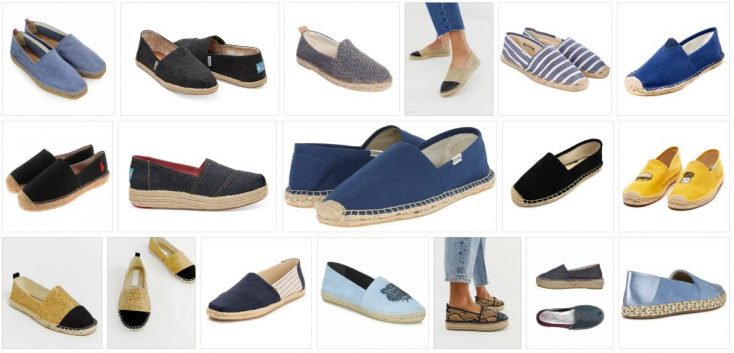The term espadrille comes from Hispanic Arabic and refers to footwear generally made with canvas and whose sole is made from hemp, esparto grass or other fibers. To secure them to the feet, the espadrilles can have a strap or an elastic, although sometimes they simply fit.
Widely used in Latin American countries, Spain and some French regions, espadrilles are characterized by being light. Although most are flat, some have a raised heel. Check Bestaah for pregnancy shoes.
The manufacture of espadrilles is often handmade, being woven on looms. Some less simple models have a rubber covering on the sole in order to increase its durability and provide protection against water and humidity.
Historians believe that espadrilles emerged in Ancient Rome as an evolution of the sandals worn by the Egyptians. The Romans, to protect their feet from sun exposure and high temperatures, decided to create footwear similar to a covered sandal.
For many years in Latin America, espadrilles were associated with workers in the fields. Due to their comfort and low cost, those who worked in the rural environment used to choose espadrilles to carry out their tasks. Today, with new designs and a wide variety of colors, espadrilles are used in summer by young people from all walks of life, including in cities.
Alpargatas Argentina, on the other hand, is a company with more than a century of history that is dedicated to the production of footwear and other textile articles. Its best-known brand is Topper, created in 1975.
How to make homemade espadrilles
Although at first glance it may seem like a process that can only take place in a specialized factory, many people make their own espadrilles, something that can lead to money savings and greater freedom in creating original designs.
The necessary materials are:
* two soles;
* pieces of cloth with the desired colors or designs;
* upholstery needles;
* waxed, twine or embroidery thread;
* paper to draw the patterns;
* thick pins;
* scissors;
* markers.
The first step is to prepare the pattern. For those who have no previous experience in making espadrilles, you can always buy cheap ones, undo them and copy the pattern on paper. The heel and the front toe are expected to be separate: the former is a kind of very wide rectangle with a certain curvature, while the toe should be shaped similar to that of a rounded tent seen from the front.
In espadrilles, there is no difference between the left and the right foot, something that facilitates the process and testing. Therefore, at this point it is possible to cut out the patterns and place them on each sole to ensure that there are no errors or irregularities.
It is time to cut the pieces of fabric, both for the lining and for the external part. Next, it is recommended to add the desired decorations, and then sew everything along the contour; note that the sewing must be done from the inside, and therefore it is necessary to leave a small gap to turn the structure after completing this step. For the soles, the process is the same as for the toes.
Having the two pieces of each foot, it is possible to sew them to their respective soles. A tip to achieve a uniform result is to make small marks with the marker at the points where we will pass the needle, and then fix the pieces to the sole with pins, starting with the rear ones, so that their ends are inside the front ones. Before sewing them between them, it is advisable to test the espadrilles to make sure not to close the hole too much.
